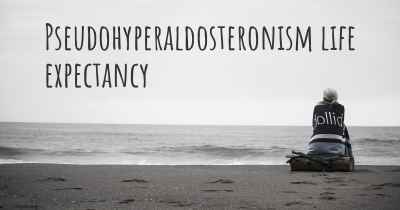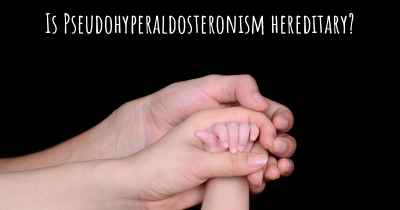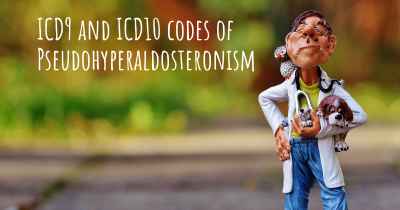Living with Pseudohyperaldosteronism. How to live with Pseudohyperaldosteronism?
Can you be happy living with Pseudohyperaldosteronism? What do you have to do to be happy with Pseudohyperaldosteronism? Living with Pseudohyperaldosteronism can be difficult, but you have to fight to try to be happy. Have a look at things that other people have done to be happy with Pseudohyperaldosteronism

Living with Pseudohyperaldosteronism
Pseudohyperaldosteronism, also known as apparent mineralocorticoid excess, is a rare genetic disorder that affects the body's ability to regulate sodium and potassium levels. This condition mimics the symptoms of primary hyperaldosteronism, but it is not caused by an overproduction of aldosterone. Instead, it is characterized by a defect in the enzyme responsible for inactivating cortisol, leading to excessive cortisol-like activity in the kidneys.
Understanding Pseudohyperaldosteronism
Living with pseudohyperaldosteronism can be challenging, but with proper management and support, individuals can lead fulfilling lives. It is important to have a good understanding of the condition and its implications. Consulting with a healthcare professional who specializes in endocrinology or genetic disorders is crucial. They can provide you with accurate information, answer your questions, and guide you through the management process.
Medical Management
Medical management is the cornerstone of living with pseudohyperaldosteronism. Your healthcare provider may prescribe medications to help regulate your sodium and potassium levels. These medications may include mineralocorticoid receptor antagonists, such as spironolactone or eplerenone, which can help counteract the effects of excessive cortisol-like activity in the kidneys. Regular monitoring of your hormone levels and electrolyte balance will be necessary to adjust medication dosages as needed.
Dietary Considerations
Adopting a balanced and controlled diet is essential for managing pseudohyperaldosteronism. Your healthcare provider or a registered dietitian can help you develop a personalized meal plan that focuses on maintaining appropriate sodium and potassium levels. This may involve reducing your sodium intake and ensuring an adequate intake of potassium-rich foods, such as bananas, oranges, spinach, and sweet potatoes. It is important to follow your prescribed diet and avoid excessive consumption of processed foods, which are often high in sodium.
Fluid Intake
Monitoring and managing your fluid intake is crucial in maintaining electrolyte balance. Your healthcare provider may recommend specific fluid restrictions or guidelines based on your individual needs. It is important to follow these recommendations to prevent dehydration or fluid overload, both of which can impact your sodium and potassium levels.
Regular Medical Check-ups
Scheduling regular check-ups with your healthcare provider is essential to monitor your condition and make any necessary adjustments to your treatment plan. These appointments will typically involve blood tests to assess hormone levels and electrolyte balance. Your healthcare provider may also perform imaging tests, such as CT scans or MRIs, to evaluate the structure and function of your kidneys.
Emotional Support
Living with a chronic condition like pseudohyperaldosteronism can be emotionally challenging. It is important to seek emotional support from loved ones, friends, or support groups. Connecting with others who have similar experiences can provide a sense of understanding and help you cope with the challenges you may face. Additionally, consider speaking with a mental health professional who can provide guidance and support in managing the emotional impact of living with a chronic condition.
Conclusion
While living with pseudohyperaldosteronism may present challenges, it is possible to lead a fulfilling life with proper management and support. By working closely with your healthcare provider, following a balanced diet, monitoring fluid intake, and seeking emotional support, you can effectively manage the condition and minimize its impact on your daily life.








